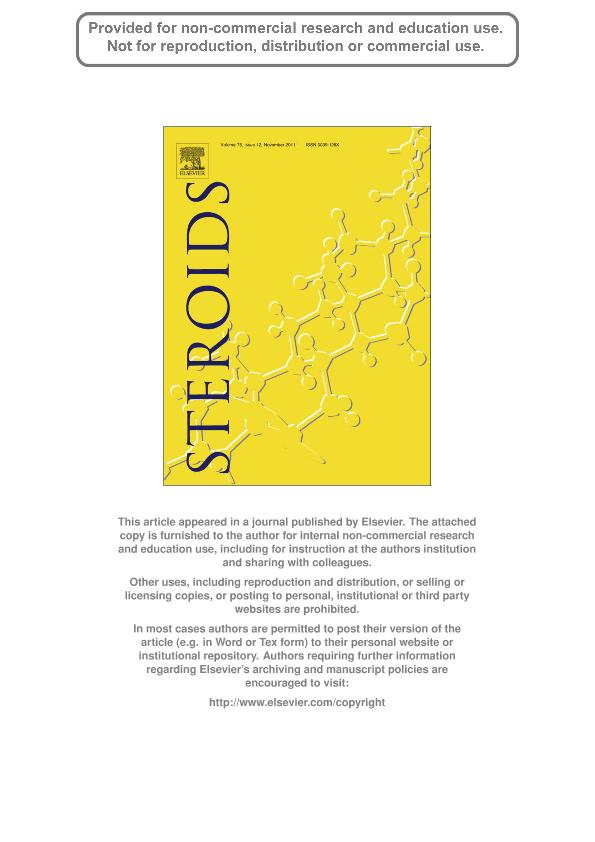Artículo
Role of 17b-estradiol and testosterone in apoptosis.
Vasconsuelo, Andrea Anahi ; Pronsato, Lucía
; Pronsato, Lucía ; Ronda, Ana Carolina
; Ronda, Ana Carolina ; Boland, Ricardo Leopoldo
; Boland, Ricardo Leopoldo ; Milanesi, Lorena Magdalena
; Milanesi, Lorena Magdalena
 ; Pronsato, Lucía
; Pronsato, Lucía ; Ronda, Ana Carolina
; Ronda, Ana Carolina ; Boland, Ricardo Leopoldo
; Boland, Ricardo Leopoldo ; Milanesi, Lorena Magdalena
; Milanesi, Lorena Magdalena
Fecha de publicación:
11/2011
Editorial:
Elsevier Inc
Revista:
Steroids
ISSN:
0039-128X
Idioma:
Inglés
Tipo de recurso:
Artículo publicado
Clasificación temática:
Resumen
17β-Estradiol (E2) and Testosterone (T) exert actions in most animal tissues, in addition to the reproductive system. Thus, both sex steroid hormones affect growth and different cell functions in several organs. Accordingly, the nuclear estrogen (ER) and androgen (AR) receptors are ubiquitously expressed. Moreover, ER and AR may have non-classical intracellular localizations, e.g. plasma membrane, mitochondria and endoplasmic reticulum, raising additional complexity to the functional roles of E2 and T. In addition to the modulation of gene transcription by direct interaction with their cognate nuclear receptors, the steroids can rapidly activate signaling pathways by a non-genomic mechanism mediated by receptors identical to or different from known steroid receptors. Among various functions, E2 and T can regulate apoptosis through those pathways. In mitochondria, the presence of ER and AR and actions of estrogen and androgen have been shown, in keeping with the organelle being a control point of apoptosis. The most recurrent action for each steroid hormone is the protection of mitochondria against different insults, resulting in antiapoptosis. This review summarizes the molecular basis of the modulation of programmed cell death by E2 and T in several tissues.
Archivos asociados
Licencia
Identificadores
Colecciones
Articulos(CCT - BAHIA BLANCA)
Articulos de CTRO.CIENTIFICO TECNOL.CONICET - BAHIA BLANCA
Articulos de CTRO.CIENTIFICO TECNOL.CONICET - BAHIA BLANCA
Citación
Vasconsuelo, Andrea Anahi; Pronsato, Lucía; Ronda, Ana Carolina; Boland, Ricardo Leopoldo; Milanesi, Lorena Magdalena; Role of 17b-estradiol and testosterone in apoptosis.; Elsevier Inc; Steroids; 76; 12; 11-2011; 1223-1231
Compartir
Altmétricas



